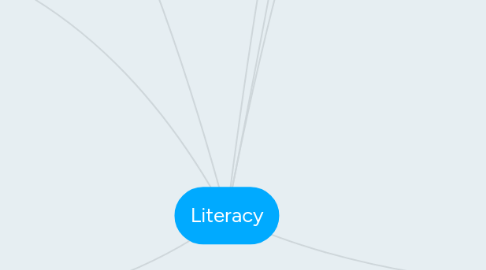
1. Help students have fluidity in their thinking.
1.1. Brainstorm
1.1.1. Ask questions that have many possible answers.
1.1.1.1. "A teacher is..."
1.2. Reflect
1.2.1. Have students comment on situations happening around them.
1.2.1.1. "What are some different ways that we can break into good working groups?"
2. Develop critical thinking skills.
2.1. Challenge
2.1.1. Ask open ended questions.
2.1.1.1. "How many different ways can we group the students in this class?"
2.1.1.2. birthdays, gender, pets, favorite food, favorite color, etc.
2.2. Listen
2.2.1. When students ask hard questions, encourage them to arrive at their own answer.
2.2.1.1. "Why is the sky blue?" "Why does helium make balloons float?"
3. Teach students to become great communicators.
3.1. Speaking
3.1.1. Students need to learn to use verbal language effectively to express their opinions to others.
3.1.1.1. Assign a weekly speech topic.
3.2. Writing
3.2.1. Give students plenty of practice writing on a variety of topics.
3.2.1.1. "Write about your favorite time of day."
3.3. Listening
3.3.1. Students need to practice listening to others' opinions.
3.3.1.1. Have students ask thoughtful questions and give comments, after listening to others' speeches or writing.
3.4. Reading
3.4.1. Students will learn to develop their own opinions by reading what others have to say on a topic.
4. Help students learn to use information resourcefully.
4.1. Model how to use different resources.
4.1.1. dictionaries, encyclopedias, library catalogs, search engines, websites, books, and magazines
4.2. Teach them how to determine if a source is reliable.
4.2.1. Look at the author's credentials, look at the website's credentials and links.
5. My teaching will look like...
5.1. I will be observing the students as they work to solve a problem.
5.1.1. I won't jump in with my solution or way of doing the problem.
5.1.1.1. I will focus on the process that the students are engaged in, and be patient as they are looking at problems from new perspectives.
5.2. I will support the students' efforts and let them know that what they are doing is important.
5.2.1. Make sure my classroom is one where students feel free to express their ideas without being afraid of a wrong answer or not being taken seriously.
6. My classroom will look like...
6.1. ...a busy place with students doing different things in different locations.
6.1.1. Individual, partners, small groups.
6.1.1.1. Some will be researching. Others will be creating a solution. Others will be conferring with peers to fine tune their work.
6.2. I will have many different people involved in this learning.
6.2.1. Local "experts" to share with the students, parents, older students will all share time with the class, helping them to learn.
6.3. Technology will be used in many ways.
6.3.1. Research, exploring, creating ways to share their work.
6.3.1.1. Internet, learning games, different presentation options.
6.3.1.1.1. PBL Project site, FFFFound!, simulations, Prezi, PowerPoint, word, excel, etc.
7. Roles others will play
7.1. Teachers
7.1.1. I will collaborate with other classroom teachers to share resources and strategies.
7.1.1.1. Work with another class on a project.
7.2. Librarians
7.2.1. The school librarians will collaborate with teachers, provide help with instructional and technology resources.
7.2.1.1. Work with students to help them research and show them technologies to use.
7.3. Tech Coordinators
7.3.1. They will assist the teacher and students with learning new techniques and tools for problem solving.
7.4. Administration
7.4.1. My principal will support me in the classroom. She will help me acquire the materials and tools I need to teach the students.
